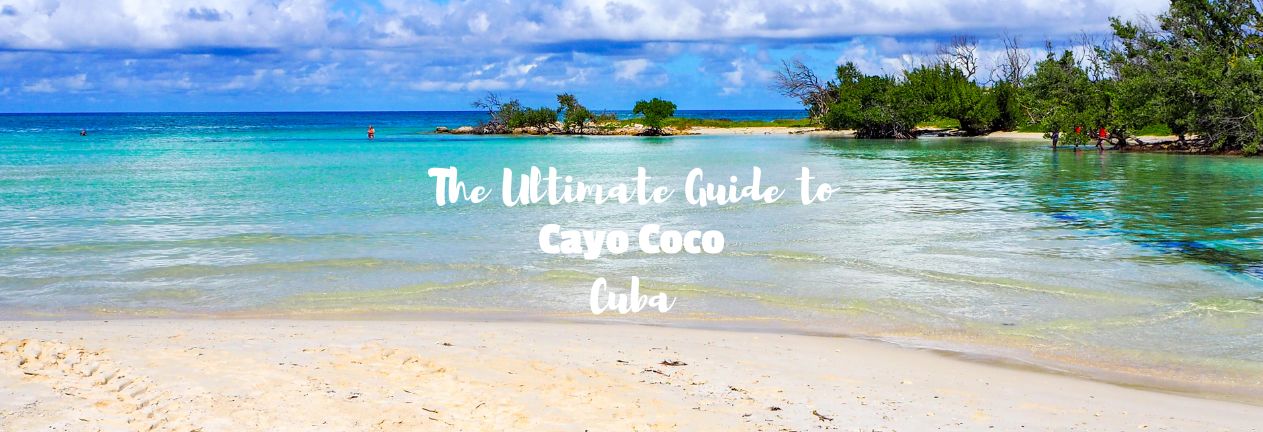Cayo Coco, a jewel in Cuba’s Jardines del Rey archipelago, is one of the Caribbean’s most serene and picturesque island getaways. Known for its powdery white-sand beaches, crystal-clear turquoise waters, and laid-back all-inclusive resorts, it’s the kind of place where time slows down and relaxation becomes second nature. Whether you’re looking to unplug on a romantic retreat or explore Cuba’s wild northern coastline, Cayo Coco offers a unique mix of natural beauty and comfort.
THIS POST MAY CONTAIN COMPENSATED AND AFFILIATE LINKS. MORE INFORMATION IN OUR DISCLAIMER
Far from the bustle of Havana or the crowds of Varadero, this small island offers peace, privacy, and postcard-worthy views around every corner. Cayo Coco is the fourth largest island in Cuba, and is dominated by tourist complexes; there’s no local scene here. This is where to come if you want a gloriously all-inclusive experience. The island is named Coco for the white ibis, which is known as “coco” locally.
PRACTICAL TRAVEL TIPS
- 🛡️ Get Travel Insurance: Civitatis includes medical expenses, repatriation, theft, luggage delays. No deductibles or upfront payments. Get a quote here. .
- 🛂💻 Buy your Cuba eVisa here.
- 🔌 Be ready for the plug, socket & power situation.
- 📶 Internet, maps, data on the go. Buy an eSim for Cuba. Or pre-order a physical SIM card
- 🔒 Do NOT leave home without a VPN. Buy for your trip here.
Why Visit Cayo Coco?
Nature lovers flock here to spot Cuban flamingos, explore hidden coves, or snorkel vibrant coral reefs. For beachgoers, the silky sand and calm, shallow waters create a perfect setting for swimming and sunbathing. And for travelers seeking a no-fuss holiday, the island’s cluster of beachfront all-inclusives provides everything you need to unwind in comfort.
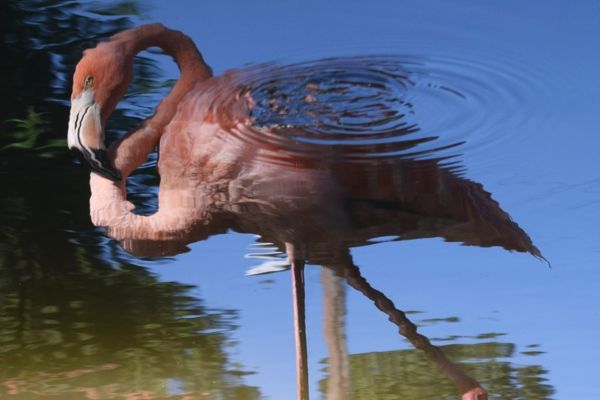
Where is Cayo Coco?
Cayo Coco is located off Cuba’s north-central coast, in the Jardines del Rey (Gardens of the King) archipelago. This chain of cays and islets stretches along the Atlantic Ocean and is part of Ciego de Ávila Province.
The island is connected to the Cuban mainland by a 17-kilometer (10.5-mile) causeway, making it easily accessible by car as well as by air. Surrounded by coral reefs and mangroves, Cayo Coco lies just west of Cayo Guillermo and north of the town of Morón. Despite its growing popularity, it retains a quiet, remote charm far removed from Cuba’s larger cities.
Getting to Cayo Coco
By Air: Most visitors arrive via Jardines del Rey International Airport (CCC), which handles both domestic flights from Havana and international routes from Canada and Europe.
By Bus or Car: Cayo Coco is connected to the mainland by a 17-mile (27-kilometer) causeway across the Bahía de Perros, allowing independent visitors to road trip from Havana or Camagüey.
- Read my guide to the Viazul Bus here
- My car rental guide is here.
- Transfers from Havana to Cayo Coco can be booked here.
The Viazul Bus doesn’t run here; the closest place you’ll get to on it is Ciego de Avila, from where you’ll need to get a taxi. It will cost around US$60 from Ciego de Avila to Cayo Coco.

Getting Around Cayo Coco
There’s a Transtur minibus that runs on the island; it provides a daily shuttle service between the hotels and attractions. Ask at your hotel for current pricing, but expect between US$5 and US$10 a day.
When to Visit Cayo Coco
The best time to visit Cayo Coco is during Cuba’s dry season: November to April. Expect warm days, cool breezes, and lower humidity—ideal for beach lounging and outdoor adventures. There’s more on the best time to visit Cuba in my guide here.
May to October is wetter and warmer, with occasional afternoon showers and the risk of hurricanes (especially August to October). However, you’ll benefit from fewer tourists and lower prices.

Where to Stay in Cayo Coco
Cayo Coco’s accommodations are almost exclusively all-inclusive beach resorts. These range from luxurious adults-only enclaves to family-friendly properties with splash pools and kids’ clubs.
Top Resorts at Cayo Coco Include:
- Melia Cayo Coco – adults-only with beautiful overwater bungalows
- Pullman Cayo Coco – modern, well-rounded resort with multiple restaurants
- Iberostar Selection Esmeralda – new, elegant, family-friendly with a quieter vibe
If you want something even more secluded, consider staying on nearby Cayo Guillermo, just a short drive away.
If you want to stay local, then you’ll need to head to Moron and look at a Casa Particular. My guide to casa particulars is here. There are no casa particulars on Cayo Coco.
Best Beaches in Cayo Coco
Cayo Coco is renowned for its postcard-perfect coastline—where powdery white sand meets shallow, crystalline waters in every imaginable shade of blue. It definitely contains some of Cuba’s Best Beaches. Whether you’re looking to relax in a beach chair with a cocktail, snorkel in calm reef-protected waters, or find a quiet stretch of sand away from the crowds, the beaches here offer something for every type of traveler. Here are some of the top beaches to explore during your stay.
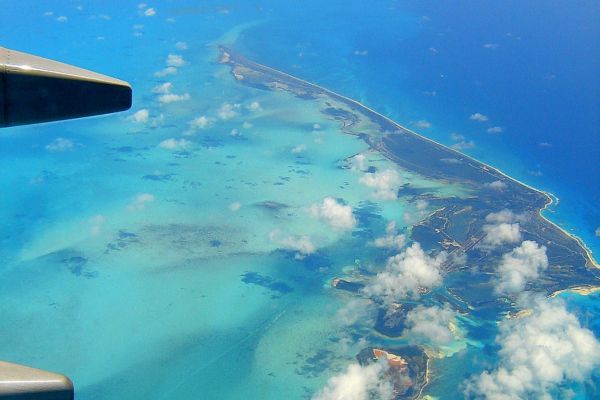
- Playa Flamenco – The quintessential Cayo Coco beach: wide, powder-soft sand and calm waters, great for wading and families.
- Playa Prohibida – A quiet, undeveloped beach with wild vegetation and scenic photo ops. Ideal for a peaceful walk or birdwatching.
- Playa Larga – A great spot for snorkeling with patches of coral reef close to shore.
- Playa Los Esteros – A long, scenic stretch of shoreline near many resorts, ideal for early morning walks or sunset strolls.
- Playa Dorada – Known for its gentle slope and clear, shallow waters, it’s perfect for families with young kids and casual swimmers.
Top Things to Do in Cayo Coco (Beyond the Beach)
Cayo Coco isn’t just about sunbathing—there’s plenty to see and do if you’re up for adventure or wildlife encounters. Here are the best things to do in Cayo Coco.
Snorkeling & Scuba Diving Cayo Coco
Cayo Coco is a paradise for underwater explorers, offering some of the best snorkeling and diving experiences on Cuba’s north coast. The island sits near the edge of the Jardines del Rey (Gardens of the King) archipelago, which is part of the second-largest coral reef system in the world, spanning over 400 km. Clear waters, vibrant coral formations, and abundant marine life make this area ideal for both beginners and experienced divers.
There are two dive centres here, the Marina Gaviota Cayo Coco and the Blue Coco Diving Center. You’ll pay between US$40-$50 per dive.
Top Snorkeling Spots
1. Playa Flamenco Reef
Located just off Playa Flamenco, this is one of the most accessible snorkeling sites in Cayo Coco. You can wade out from shore to explore coral heads teeming with colorful fish, sea stars, and anemones. It’s a great place for beginners or those who prefer to snorkel close to land.
2. Coral Reef Excursions
Many resorts and tour companies offer boat excursions to offshore reefs where the snorkeling is even more spectacular. These half-day trips take you to deeper, less disturbed coral gardens filled with parrotfish, angelfish, lionfish, barracuda, and occasionally sea turtles. The guides typically provide gear and offer guidance for novice snorkelers.
3. Laguna Azul (Blue Lagoon)
Although not a beach, this natural lagoon is a unique snorkeling site surrounded by mangroves. It’s known for calm, clear water and a mix of marine and freshwater species—ideal for a peaceful, close-up look at Cuban aquatic life. There’s more on Cuba’s best places to snorkel here.
Top Scuba Diving Sites
1. El Peñón Reef
Just a short boat ride from the island, El Peñón is a favorite among divers for its wall dives and dramatic coral formations. Expect to see sponges, moray eels, lobsters, and schools of tropical fish. Visibility is excellent, often exceeding 30 meters.
2. Jardines del Rey Marine Park
This protected marine reserve offers some of the most pristine diving in the region. Dives here reveal healthy reef systems, shipwrecks, and even caves and tunnels. Advanced divers will enjoy drift diving and exploring deeper reef ledges.
3. Cayo Guillermo Sites
Nearby Cayo Guillermo also boasts several dive sites worth exploring, including shallow reefs perfect for check dives or beginner certification, and deeper drops with rich biodiversity for more experienced divers.
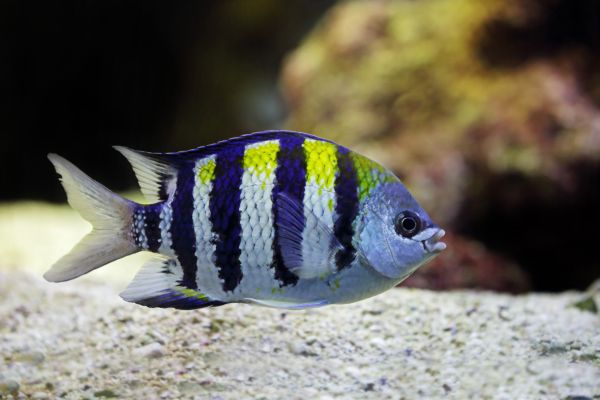
What You’ll See Underwater at Cayo Coco
Expect encounters with:
- Hard and soft corals in vibrant purples, oranges, and reds
- Tropical reef fish such as sergeant majors, damselfish, wrasses, and groupers
- Larger marine life like stingrays, sea turtles, and even nurse sharks in deeper areas
- Occasional dolphins or manatees in the open sea on boat rides out
Birdwatching in Cayo Coco
Cayo Coco is a gem for birdwatchers and nature lovers. Part of the Jardines del Rey archipelago, the island is home to diverse ecosystems—coastal lagoons, mangroves, salt marshes, and semi-deciduous forests—that support more than 200 species of birds, including many migratory and endemic species. Whether you’re a seasoned birder or simply enjoy spotting wildlife, Cayo Coco offers excellent opportunities to connect with Cuba’s avian treasures.
Where to Go Birdwatching
1. Laguna de los Flamencos (Flamingo Lagoon)
Just inland from the resort areas lies one of the best spots on the island for birdwatching. This shallow lagoon is a feeding ground for large colonies of Caribbean flamingos, which can be seen wading through the water in striking pink flocks. Early morning and late afternoon are ideal times for viewing.
2. Sitio La Güira Eco-Trail
Located near the mainland bridge to Cayo Coco, this ecological reserve offers a marked trail through coastal forests and mangroves. It’s home to Cuban emerald hummingbirds, Cuban green woodpeckers, herons, pelicans, ibises, and warblers. The peaceful setting and interpretive signs make it a rewarding destination for both amateur and expert birders.
3. Cayo Paredón Grande
A short drive from Cayo Coco, this neighboring cay is less developed and boasts pristine habitats. It’s one of the best places to see Cuban gnatcatchers, thick-billed vireos, and the elusive Cuban tody—a brilliantly colored, tiny bird endemic to Cuba. The island’s quiet trails and lack of tourists make it a birder’s paradise.
4. Road to Playa Prohibida (Forbidden Beach)
This quieter stretch through mangrove-lined wetlands and coastal scrub is a lesser-known but excellent birding route. Look for whistling ducks, black-necked stilts, spoonbills, and various raptors along the way.
5. Cueva del Jabalí area (evening hours)
While better known for nightlife, the forested surroundings of this cave bar are active with birds in the early morning and before sunset. You might spot owls or nightjars just before dusk.
Birds to Watch For in Cayo Coco
- American flamingo (Phoenicopterus ruber)
- Cuban trogon (Tocororo) – Cuba’s national bird, known for its brilliant red, white, and blue plumage
- Cuban tody – A small, neon-green endemic bird often seen flitting near low branches
- Cuban green woodpecker
- West Indian whistling duck
- Ospreys, herons, and egrets
- White ibis and roseate spoonbills
- Cuban bullfinch and Cuban blackbird
Bring binoculars, wear neutral clothing, and pack insect repellent if you’re venturing into mangrove or wooded areas. Your hotel may be able to help organize guided nature walks or birdwatching tours led by local experts.
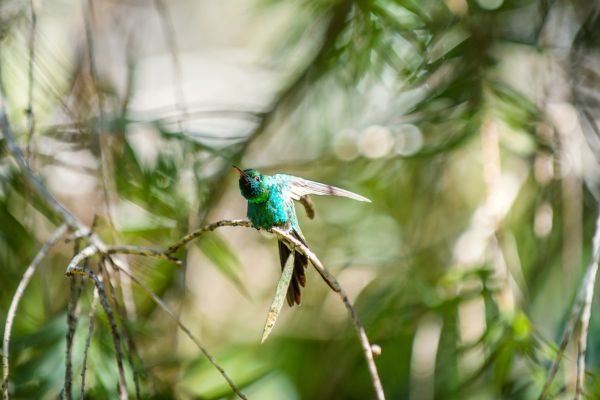
Visit Parque Natural El Bagá
Located on the north‑western tip of Cayo Coco, Parque Natural El Bagá sits on the site of a former airport and spans approximately 769 hectares (7.7 km²) of mangroves, lagoons, coastal forest, and dry scrub habitat. Established in 2002, it protects one of the richest ecosystems in the Jardines del Rey archipelago and is a standout stop for nature lovers.
Trails & Visitor Experience
The park offers foot and horseback trails of varying length, winding through Baga tree groves, red mangrove channels, dry woodland (Yana forest), and coastal dunes with species like cocotrinax litoralis and orchids. Trails typically take around 3–4 hours, with options for a full-day itinerary if you include canoe rides, guided tours, and cultural exhibits. The interpretive center provides context on Cuba’s ecology, the Taíno ancestral culture, and local conservation initiatives. Nearby, you’ll find a recreated Taíno village, a pirate ship exhibit, and even sundecks and picnic areas.
Flora & Fauna Highlights
You may spot iguanas, hutias (native rodents), tortoises, and crocodiles in the park’s lagoons and marshes. Around 130 bird species have been recorded here—including Caribbean flamingos, Cuban trogon, West Indian woodpecker, Cuban black hawk, and Cuban parrot—a testament to the park’s role in the Caribbean migratory corridor.
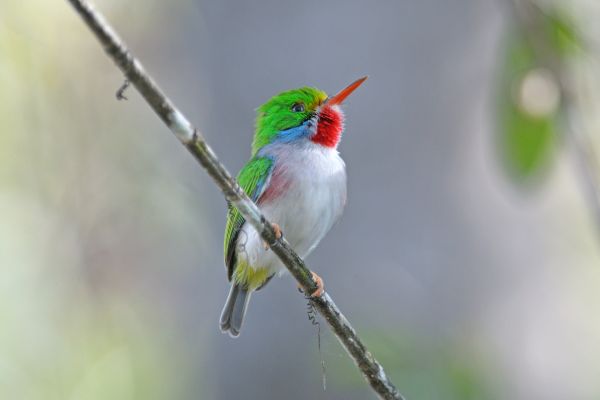
Visiting Tips
- Best time: Dry season (November–April) for easier trail walking, better visibility, and higher bird activity.
- Wear: Closed hiking shoes, long sleeves, and insect repellent (mosquitoes can be abundant in shaded or wet areas).
- Bring: Water, sun protection, binoculars or telephoto lens for birding, a camera, and small cash for souvenirs/snacks.
- Plan ahead: Ask your resort concierge about the latest access status and arrange a guided visit if possible.
Boat & Catamaran Tours from Cayo Coco
One of the most memorable ways to explore the beauty of Cuba’s northern coast is by sea. From Cayo Coco, a variety of boat and catamaran tours depart daily, offering visitors a chance to experience the crystalline waters, secluded cays, and marine life that define this part of the Caribbean. Whether you’re after a romantic sunset sail, a family-friendly snorkeling excursion, or a full-day adventure to offshore islands, there’s a cruise to suit every taste.
What to Expect on a Tour
- Snorkeling equipment is usually provided, though bringing your own mask is a good idea for comfort.
- Meals and drinks are often included in the cost—ask in advance about menus and any dietary restrictions.
- Guides speak English and Spanish, and provide insight into marine ecosystems and island history.
- Pick-up from hotels in Cayo Coco and Cayo Guillermo is typically included.
- Tour lengths vary from 2–8 hours depending on the experience.
Kite Surfing
With steady coastal winds and shallow waters, Cayo Coco is an ideal destination for kite surfers of all skill levels. Lessons and rentals are available, especially around Playa Pilar and Playa Flamenco. The winds here are so consistent that there are several areas specifically allocated for kitesurfing. You’ll pay around US$25 to access them.
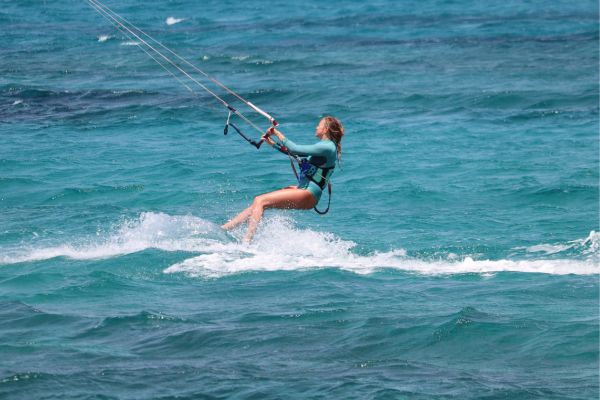
La Cueva del Jabali
This cave-turned-nightclub is one of the few nightlife spots on the island, offering music, dancing, and an underground bar set inside a natural cavern. It’s a unique and fun way to experience Cuban rhythm after sunset.
Day Trips from Cayo Coco
When all that glorious beach and ocean becomes too much, you can explore further. There are several day trips you can take from Cayo Coco; here are the best of them.
Cayo Guillermo
Just a short drive west over a connecting bridge, Cayo Guillermo is a smaller island with a wilder, more remote vibe. It’s home to Playa Pilar, one of the most beautiful beaches in the country, known for its soft dunes and surreal turquoise water. The beach is named after Ernest Hemingway’s boat and is perfect for a day of swimming, kite surfing, or simply soaking up the sun.
Morón
Head back across the causeway to the Cuban mainland and visit the lively town of Morón. It’s a great place to experience authentic Cuban life, far removed from the resort zone. Wander the local markets, stop by a tobacco shop, or visit the Museo de Azúcar (Sugar Museum) for a glimpse into the region’s agricultural heritage. Horse-drawn carriages and a giant rooster statue (the town’s symbol) add to the local charm.
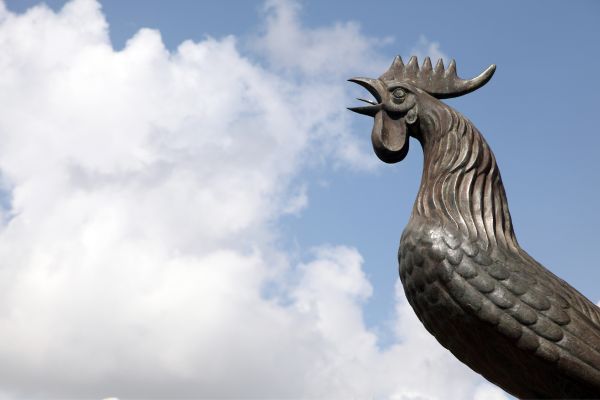
Laguna de la Leche
Near Morón lies Laguna de la Leche, Cuba’s largest natural freshwater lake. Its name—“Lake of Milk”—comes from its chalky white appearance caused by limestone deposits. This is a great spot for birdwatching, boating, or enjoying a seafood lunch at a lakeside paladar. It’s especially popular with Cuban families on weekends.
Rancho Palma or Ranchón Cubano
Several countryside ranches nearby offer half-day or full-day excursions where you can go horseback riding, enjoy traditional Cuban food, and experience the rural lifestyle. These outings often include live music, dancing, and local rum tastings.
Cuba: Sugar, Tobacco & Rum Tour
Immerse yourself in Cuba’s iconic agricultural heritage with a full‑day excursion from Cayo Coco to the heart of the central province of Ciego de Ávila. Available on select days, this guided tour offers a deep dive into the traditions of tobacco, sugar, coffee, and rum production.
You’ll get to visit a working farm to see tobacco, coffee, cocoa, and sugar cane cultivation. Sample freshly roasted coffee and learn the art of cigar rolling from expert torcedores. Next, you’ll enjoy a visit to the town of Morón before heading to the Sugar Mill Museum and then taking a cruise through mangrove channels at the Laguna de la Redonda, one of the region’s most picturesque lakes.
What to Bring to Cayo Coco
I do recommend that you bring the following to Cayo Coco
- Good sunscreen (I recommend this reef-safe option)
- A decent hat (I love and use this Sunday Afternoon one)
- Good sunglasses – I’ve used Maui Jim’s for years.
- A cover-up from the sun
- A quick dry towel
- A reusable water bottle (full!) with spare water
- Water shoes or hiking sandals – trails on the island need them
- Mosquito repellent
- Snorkeling Gear
- A rash guard (the sun is brutal and no more so than when you’re face down in the water!)
CUBA TRAVEL RESOURCES
CUBA BY BUS EBOOK
Buy our Ebook. Preplanned itineraries, themed routes, exact instructions for an easy visit.
Buy Cuba by Bus
BEST
CASA PARTICULARS
See choices here
Luxury rooms? Budget rooms? Laundry? Best room choice & Great hosts.
TOURS & ATTRACTIONS
Top daytrips, small group tours, tickets, pay online easily with free cancellation and top local guides.
Top options here.
TRANSFERS & TAXIS
Read my Guide
Go from A to B easily. Sightsee along the way. Maximise your time in Cuba. Book early for more options.
Final Words on what to see and do at Cayo Coco
Cayo Coco is one of Cuba’s most alluring island escapes—blessed with unspoiled beaches, turquoise waters, and abundant wildlife. Whether you come to lounge under a palm tree, snorkel vibrant coral reefs, or enjoy all-inclusive comfort, Cayo Coco delivers a tropical experience with ease and authenticity. Its peaceful vibe, coupled with opportunities for both relaxation and soft adventure, makes it a standout destination for travelers looking to unwind and reconnect with nature. If you’re seeking a quiet slice of the Caribbean, far from the crowds, Cayo Coco should be at the top of your Cuban itinerary.
Cuba’s Best is a participant in the Amazon Services LLC Associates Program, an affiliate advertising program designed to provide a means for sites to earn advertising fees by advertising and linking to amazon.com, amazon.co.uk, amazon.ca. Amazon and the Amazon logo are trademarks of Amazon.com, Inc. or its affiliates.
